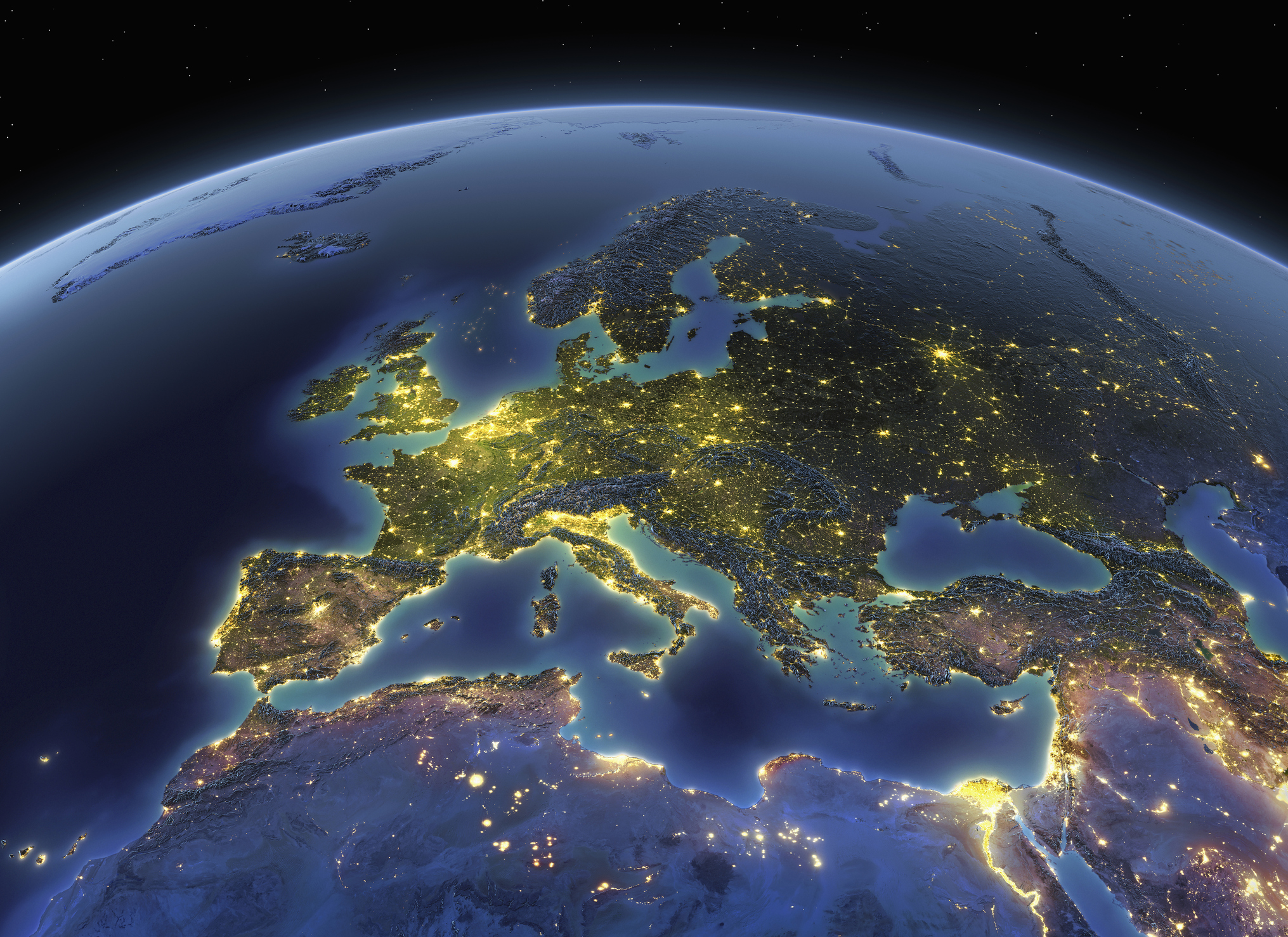
To help you understand what is going on in the global economy and what we expect to happen in the future, our highly experienced Kiplinger Letter team will keep you abreast of the latest developments and forecasts (Get a free issue of The Kiplinger Letter or subscribe). You’ll get all the latest news first by subscribing, but we will publish many (but not all) of the forecasts a few days afterward online. Here’s the latest…
Europe’s economy has struggled for years, going back to the fiscal crisis in Greece a decade ago and continuing through the pandemic, war and inflation. Debt continues to bedevil some countries, especially France, which is facing a budget crisis. But look further ahead and there is hope for the European Union’s economies.
The eurozone, the 20-nation currency area that uses the euro, grew at a pace of just 0.1% in the second quarter. More timely data shows that the euro area’s economy remains weak but has so far been able to avoid a contraction in the face of U.S. tariffs. While part of the weakness in recent months reflects payback from an increase in production by European exporters in anticipation of potential U.S. tariffs, underlying growth, including private consumption and investment, also remains sluggish. Higher tariffs are likely to dampen growth in the third quarter, as exporters adjust to the 15% across-the-board duty and as the EU reduces tariffs on U.S. industrial goods.
But growth is likely to pick up in coming quarters. The Purchasing Managers’ Index for the currency bloc and other economic data show steady improvement this year. Meanwhile, the forward-looking components of recent economic surveys point to a further pickup ahead.
Euro area countries engaged in aggressive fiscal cuts after the 2008 global financial crisis. Germany didn’t help matters by enshrining a debt brake in its constitution and limiting structural deficits to just 0.35% of GDP. European economies followed the same pattern during the 2014 euro area crisis, when some of the most heavily indebted countries, including Greece and Italy, went through painful austerity to cut their deficits.
Europe’s prolonged private-sector deleveraging has been another major impediment to growth in recent years because it weakened demand across countries as debt loads needed to be pared down. Weaker banks compounded Europe’s deleveraging woes. In the wake of the global financial crisis, non-performing loans went through the roof and the European Central Bank’s negative interest rates depressed the banking sector’s profitability. By 2013, banks’ return on equity had reached a low of 1%.
After years of painful economic adjustments, the EU is in better shape in important ways. The private sector is now faring much better. Outside of France, the sector’s debt load has fallen from a peak of 110% of GDP to 95%, the lowest level in 17 years. Households and corporations are flush with cash, and debt servicing ratios are healthy across Europe, except in France.
Similarly, European banks have now greatly rebuilt their balance sheets. Non-performing loans are no longer a threat, capital and liquidity ratios are robust and profitability has improved. Given that banks dominate European lending, accounting for about 70% of firms’ borrowing (compared with 25% in the U.S.), a healthier banking sector will help European growth improve and will support capital spending.
The succession of crises in recent years – the pandemic, the war in Ukraine, the energy crisis and more recently trade tensions with the U.S. – has highlighted the need for more fiscal spending, both at the country and the EU level. Germany, the EU’s biggest economy, is spearheading the fiscal shift in Europe. German Chancellor Friedrich Merz has lifted Germany’s debt brake and is embarking on a $1.2 trillion spending spree focused on defense and infrastructure that will boost the broader EU economy.
Meanwhile, political turmoil in France has forced French President Emmanuel Macron to appoint a fifth prime minister in less than two years, making investors question whether the country can find the political consensus to rein in its ballooning budget deficit. Nevertheless, contagion from France’s government bond market to the rest of the euro area will probably be muted and short-lived unless the crisis in France becomes much bigger.
Yields on long-dated German and French government bonds have risen to multiyear highs as investors weigh the impact of rising debt levels and political instability in France. The French, German and Italian 30-year bond yields rose to their highest levels since the euro area crisis. The rise in borrowing costs comes amid concerns that the plans for increased defense spending in Germany will cause public debt to rise at a time when the regional economy is still weak.
Further ahead, the EU has strongly committed to deepening integration and addressing fragmentation. Positive sentiment towards the common currency and the EU is at an all-time high among Europeans after the bloc demonstrated its benefits by its successful handling of the pandemic and energy crisis. The EU also continues its efforts towards a capital market union to make European capital markets deeper and more liquid.
That said, some risks remain for Europe. The political crisis in France could add a layer of uncertainty over the next year to a still-weak economy. Drafting and passing a 2026 budget will become even harder for the French government, delaying fiscal consolidation and potentially worsening France’s debt trajectory. The rise of populist parties fueled by voters’ anger after the recent era of sluggish growth and high immigration also threatens to slow down, or potentially even derail, the EU’s plans for further integration.
This forecast first appeared in The Kiplinger Letter, which has been running since 1923 and is a collection of concise weekly forecasts on business and economic trends, as well as what to expect from Washington, to help you understand what’s coming up to make the most of your investments and your money. Subscribe to The Kiplinger Letter.



